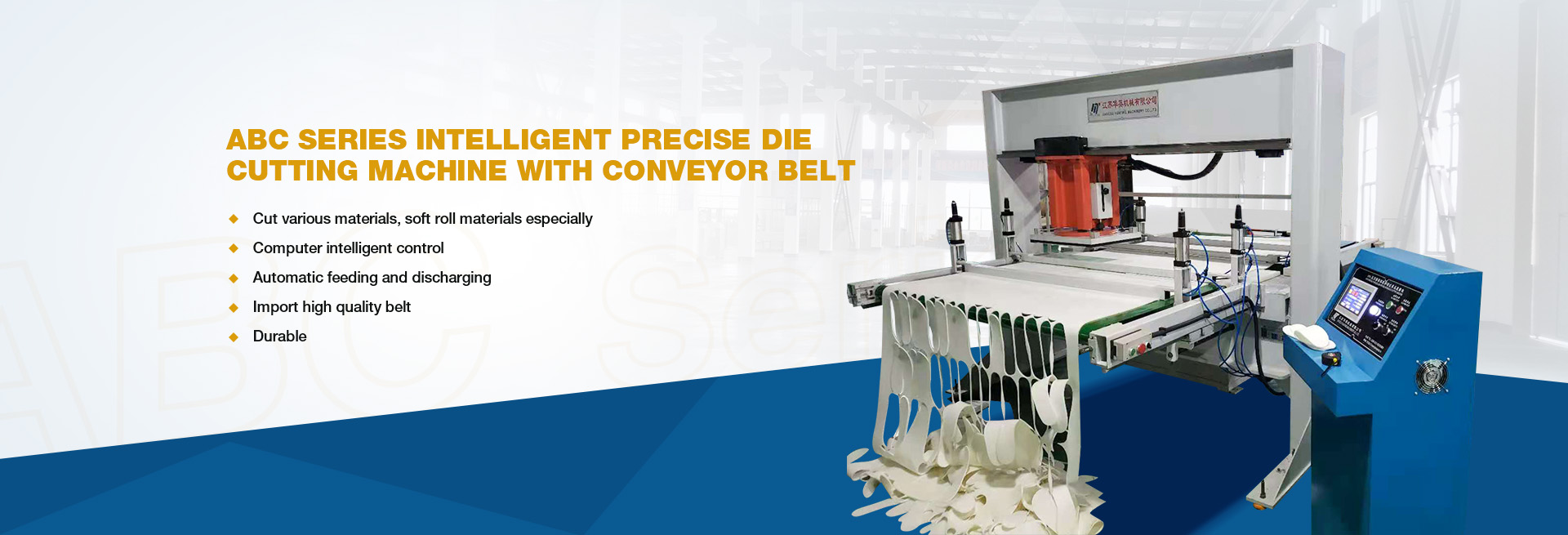In order to effectively cut off the material to prevent the damage of the knife mold, a non-metal pad will be placed in the direction of the knife mold cutting edge. The purpose is to be able to better cut off the material, effectively protect the knife mold to extend the use of the knife mold life surface, but also to prevent the machine metal directly with the metal impact vibration affect the use of the machine.
But in recent years, many industries have higher and higher requirements for product quality, such as: electronic industry, pharmaceutical industry, foreign trade export and other needed plastic absorption products, the product quality requirements are higher. The cutting edge of its product should be smooth and smooth. This also appears the cutting machine cutting material directly with the knife mold to the steel plate. The knife mold directly cuts the steel plate to make the product effect is very good, its smooth smooth edge, greatly improve the product quality.
But in the pursuit of product quality at the same time also to the cutting machine put forward more demanding conditions. At present, most machines in the market can not meet the appeal requirements under strict conditions. Why?
Let’s understand: do better cutting machine manufacturers general machine mechanical part of the precision will be controlled within 0.1mm, small manufacturers will exceed 0.2mm plus the hydraulic system reaction time and depth adjustment time relay reaction time difference, its actual accuracy will be greater than the appeal value. In order to really meet the requirements, the repeated cutting accuracy should not exceed 0.05mm
Then why are there still a lot of manufacturers have been using, but also can normally cut it? Actually you will find, most number of manufacturers in the back or cutting steel plate back with a thick board, board is compressive, most of the machine error by board elastic offset, although there are many, knife mold is broken, often cut constantly, and so on and so forth, very affect the production efficiency.
Here to remind users:
1. Thick the thickness of the back of the knife mold or the back of the cutting steel plate
2, the amount of steel plate do not choose the hardness is too hard normal stainless steel material can be
3, try not to choose the time control, the choice of position control will get a better cutting effect
The above is a few precautions of the machine, for your reference to buy.
If conditional can choose the position control or pressure control can get a better cutting effect, the position control can be selected directly hit the position switch, simple and easy to adjust, safe and reliable. The pressure control can be used by PLC, man-machine interface, and proportional valve, the knife mold can be made into a memory storage program, change the knife can directly switch the program, and has the advantages of pressure stability, no damage to the knife mold, good cutting effect, no setting and so on, so as to improve the production efficiency and reduce the use cost
The morphology of wear and its causes of cutting press
As we all know, in the cutting machine cutting material, the tool on the one hand cut the material, on the other hand the tool itself will be damaged.
The form of cutter damage mainly has two types: wear and damage. The former is continuous gradual wear; the latter includes brittle damage (such as collapse, breakage, peeling, crack damage, etc.) and plastic damage. After the tool wear, the workpiece processing accuracy is reduced, the surface roughness increases, and leads to the cutting force increase, the cutting temperature increase, and even produce vibration, can not continue to normal cutting.
Therefore, the tool wear directly affects the processing efficiency, quality and cost of the cutting machine.
The forms of cutter wear are as follows:
1. Wear of the front blade surface
2. Wear of the rear blade surface
3. Boundary wear and tear
The cause of the normal wear of the cutter tool
From the degree of temperature dependence, the normal wear of cutting tools is mainly mechanical wear and thermal and chemical wear. Mechanical wear is caused by the marking of the hard points in the workpiece material, heat and chemical wear is caused by the bonding (the tool and the workpiece material contact with the atomic distance), diffusion (the chemical elements of the tool and the workpiece to each other, corrosion, etc.).
Post time: May-06-2025




